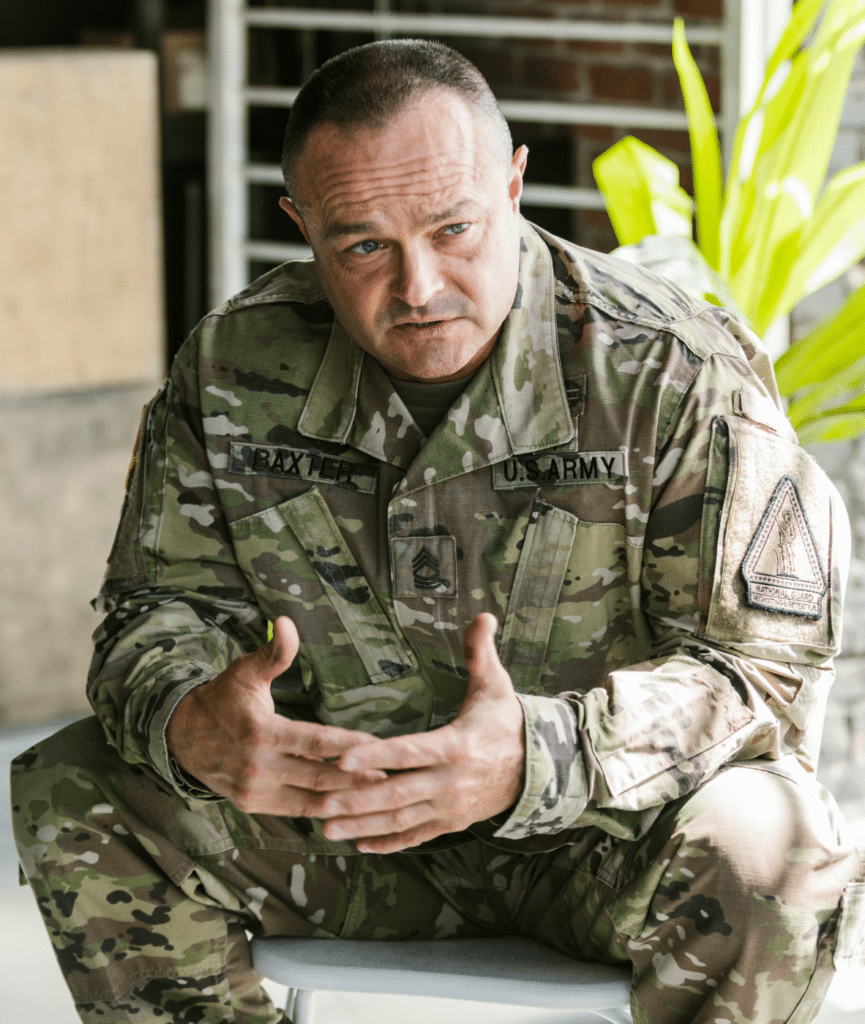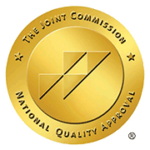Group Therapy for Veterans: Benefits and What to Expect


Returning home from service doesn’t always feel like a smooth transition. For many veterans, the shift back into civilian life brings a different kind of battle – one that’s often harder to name. Connection helps, but it has to come from the right place. Group therapy offers that space. It brings veterans together in an environment where no one has to over-explain; the understanding is already there.
Studies show that veterans who engage in group therapy often report lower levels of distress and improved social functioning.¹ Mutual understanding plays a big role in this shift. As does the support that builds when people face similar struggles side by side.
Mental health professionals can talk you through the benefits of veterans group counseling, and this guide can also help, as it walks you through:
- How group therapy for veterans works
- The benefits of veteran group therapy
- What to expect when in your first group counseling session
- Where to find group therapy for veterans

What Happens in Mental Health Group Therapy for Veterans?
Mental health group therapy for veterans opens a door for common ground to become a source of strength. Therapy for veterans in groups is usually held once a week and follows a consistent structure, guided by someone who understands both trauma and military culture.
Some groups are led by licensed therapists. Other forms of group support for veterans are facilitated by trained peers – veterans who’ve walked a similar path and are skilled in guiding group discussions in a safe, supportive way. Most groups include six to twelve participants. Some are open to new members at any time, but others may be closed, meaning the same group meets up over several weeks.
Sessions might start with a check-in, a skill-building exercise, or a guided discussion on topics like stress, trust, or trauma recovery. Veterans can share when they’re ready, or decide to just listen. Both forms of participation are welcome.
The group facilitator’s role is to keep the space grounded and respectful. They help steer conversations toward insight and growth, but never force anyone to participate before they’re ready.
In time, many veterans say they begin to feel less alone. They hear their own story in someone else’s words, and that makes healing feel possible.
How Effective Is Group Therapy for PTSD?
Group therapy plays a key role in PTSD treatment for many veterans.² It gives space to talk openly about trauma with others who understand the weight of military experience. But beyond connection, research shows that this approach delivers measurable results. For instance, group therapy for veterans can strengthen the sense of community that trauma often breaks.
Another benefit of group therapy for veterans is its normalizing effect.³ In other words, when someone else in the room names something you’ve felt but never said aloud, shame can begin to lift. Over time, this relief makes room for growth. Veterans can gain tools to manage triggers, reduce isolation, and rebuild a sense of ease – both in others and in themselves.
Additional key benefits of group therapy for veterans include:
- Reduced isolation: Veterans often feel disconnected after service. Group therapy offers consistent connection with others who understand military life⁴
- Improved emotional regulation: Talking through difficult experiences in a supportive setting helps reduce emotional reactivity over time
- Stronger coping skills: Groups often include practical tools for managing flashbacks, anger, anxiety, and hypervigilance
- Increased self-awareness: Listening to others can help veterans reflect on their own patterns, triggers, and areas for growth
- Reinforced trust: Sharing experiences and receiving support in a nonjudgmental space helps rebuild trust in others – and in oneself.
- Accountability and consistency: Weekly sessions of group therapy for combat veterans offer structure and motivation, which can support long-term progress.
- Reduced symptoms of PTSD: Studies show that group therapy often reduces PTSD symptoms as effectively as individual therapy⁵
Each support group is different, but the outcomes often point in the same direction: Connection helps veterans heal, and the benefits of group therapy for veterans are evident.
What Is the Most Effective Therapy for Veterans?
No single form of therapy works for everyone. However, several have shown strong results – especially for trauma, depression, and anxiety in veterans. We discuss some of these options below.
Cognitive Behavioral Therapy (CBT) Veterans’ Group Therapy Sessions
Cognitive behavioral therapy helps veterans identify and change patterns that keep mental health symptoms going. It’s used widely in the Department of Veterans Affairs (VA) programs and is backed by research.⁶ For example, veterans who complete CBT often report better mood, fewer triggers, and more control over their reactions.
Cognitive Processing Therapy (CPT) and Prolonged Exposure (PE)
CPT and PE are both trauma-focused. CPT helps veterans challenge beliefs that form after traumatic events like guilt, blame, or shame. PE focuses on helping people revisit painful memories in a safe, gradual way. Both approaches are used across VA hospitals and clinics and are considered first-line treatments for PTSD.⁷
Eye Movement Desensitization and Reprocessing (EMDR)
A 2020 review found EMDR very effective in treating PTSD. EMDR doesn’t require detailed talking about trauma. Instead, it uses eye movements or tapping to help the brain reprocess “stuck” memories. It has been shown to work for veterans, with some patients only requiring ten sessions to return to a stable mental state.⁸ Also, some veterans prefer EMDR when other methods haven’t helped.
Peer Group Therapy for Veterans
Peer-led groups are led by trained veterans, not therapists. But the impact can be just as powerful. In group therapy for combat veterans, no one has to explain military life – it’s inherently understood. This shared background creates safety, which makes it easier to speak openly. Additionally, research shows peer groups reduce isolation, increase engagement in treatment, and improve long-term outcomes. Many veterans use these groups alongside traditional therapy or as a first step toward it.
Starting Group Therapy Treatment for Veterans
Coping with PTSD in group therapy begins with the right fit. This means finding a team you trust and a setting that feels safe. Some groups focus on trauma. Others center around depression, anxiety, or adjusting to civilian life. What matters most is choosing a group that meets your current needs.
Group leaders can also vary. Some are licensed mental health professionals. Others are trained veterans who lead through peer support. Both models offer structure, consistency, and tools for healing. The difference comes down to preference; some veterans feel more at ease with peers, but others prefer a therapist-led format.
If it’s your first time in group therapy treatment for veterans, expect an easing-in period. Most groups begin with a check-in or brief introductions. This space to adjust is part of what helps veterans stay with the process.
Here are a few tips that can help prepare for your first session:
- Reach out beforehand: Ask how many people are in the group, how long sessions run, and what topics are usually covered
- Show up with a goal: This goal can be anything that could help you feel better, and might be as simple as sitting in the room
- Understand that there’s no pressure to talk: You can speak when you’re ready. Until then, just being present matters.
- Give it time: The first session often feels unfamiliar, but will start to feel more natural with time
Group therapy isn’t a quick fix, but it’s a reliable step forward. With the right team, it becomes a space where healing feels less distant and more possible.
VA Group Therapy Programs
Many VA medical centers and outpatient clinics offer group therapy as part of ongoing mental health care. These groups are designed specifically for veterans and cover a range of needs from PTSD and depression to stress, grief, or major life changes.
Types of groups available through the VA include:
- PTSD groups focused on trauma education and coping skills
- Support groups for depression, anxiety, or general stress
- Readjustment groups that can help with the transition to civilian life
- Peer-led groups that are built around connection, not diagnosis
- Specialty groups for women veterans, older adults, or caregivers
Most veterans join a group through a referral from their VA provider. Some locations allow walk-ins, but many require a short screening to match veterans with the right group.
Why Peer Support Through Group Therapy Is More Effective Than Traditional Therapy for Veterans
Peer support taps into something traditional one-on-one therapy can’t always reach: the quiet psychological shift that happens when someone sees their future reflected in another person’s survival.
In peer support through group therapy, veterans don’t just receive support; they observe it in action. This taps into social learning theory, a concept in psychology that shows how we learn not only by doing, but by watching others navigate challenges.⁹ For instance, seeing a peer name their triggers, apply a coping strategy, and come back next week feeling a little steadier. This kind of learning sticks. It feels possible because it’s embodied, not prescribed.
There’s also the matter of co-regulation. Humans regulate stress more effectively in the presence of others, especially those who feel emotionally safe. In peer groups, the nervous system picks up on tone, pacing, and shared emotion. This back-and-forth can help lower stress responses and make it easier to talk through difficult topics without shutting down.
Finally, peer spaces offer room for something subtle but essential: identity reconstruction. After military service, many veterans struggle to define who they are outside the uniform. In a peer group, this process unfolds in a setting where others are doing the same work. It’s not about being fixed – it’s about being witnessed while rebuilding.
Traditional therapy has its place, and often works best when combined with peer support. But for veterans who’ve spent years in environments built on teamwork and mutual reliance, peer-led spaces offer a kind of healing that feels familiar. And meeting with other military veterans in group therapy builds trust, which makes change possible.
Where to Connect With Support Groups for Veterans
Getting started with support groups for veterans doesn’t have to be complicated. Most veterans begin by checking in with their care provider. For example, VA teams can recommend group support for veterans options nearby – or help with referrals for programs that fit your needs.
You can also reach out directly. At Mission Connection, we work with veterans who are ready for change but don’t want to go it alone. Whether you’re looking for trauma recovery, life transition support, or a place to reconnect with others who understand service life, we’re here to help.
If you’re ready to take the first step or want to learn more about group therapy options, contact our team today for immediate support.

References
- Britvić, D., Radelić, N., & Urlić, I. (2006). Long-term dynamic-oriented group psychotherapy of posttraumatic stress disorder in war veterans: Prospective study of five-year treatment. Croatian Medical Journal, 47(1), 76–84. https://pmc.ncbi.nlm.nih.gov/articles/PMC2080364/
- Spiller, T. R., Duek, O., Buta, E., Gross, G., Smith, N. B., & Harpaz-Rotem, I. (2023). Comparative effectiveness of group v. individual trauma-focused treatment for posttraumatic stress disorder in veterans. Psychological Medicine, 53(10), 4561–4568. https://pmc.ncbi.nlm.nih.gov/articles/PMC10388318/
- Smith, E. R., Porter, K. E., Messina, M. G., Beyer, J. A., Defever, M. E., Foa, E. B., & Rauch, S. A. (2015). Prolonged Exposure for PTSD in a Veteran group: A pilot effectiveness study. Journal of Anxiety Disorders, 30, 23-27. https://doi.org/10.1016/j.janxdis.2014.12.008
- Eliacin, J., Patterson, S. M., Mendez, D. M., Burgess, D. J., Traylor, M. H., Borden, M. Y., Slaven, J. E., & Matthias, M. S. (2023). Findings from a peer-facilitated, social isolation intervention in the Veterans Health Administration healthcare system: A mixed-methods, pilot feasibility study. Journal of General Internal Medicine, 38(16), 3460–3471. https://pmc.ncbi.nlm.nih.gov/articles/PMC10713941/
- Schwartze, D., Barkowski, S., Strauss, B., Knaevelsrud, C., & Rosendahl, J. (2019). Efficacy of group psychotherapy for posttraumatic stress disorder: Systematic review and meta-analysis of randomized controlled trials. Psychotherapy Research, 29(4), 415–431. https://pubmed.ncbi.nlm.nih.gov/29179647/
- Murphy, J. L., Cordova, M. J., & Dedert, E. A. (2022). Cognitive behavioral therapy for chronic pain in veterans: Evidence for clinical effectiveness in a model program. Psychological Services, 19(1), 95–102. https://pmc.ncbi.nlm.nih.gov/articles/PMC10009772/
- U.S. Department of Veterans Affairs. (n.d.). Cognitive processing therapy. PTSD: National Center for PTSD. Retrieved June 2, 2025, from https://www.ptsd.va.gov/understand_tx/cognitive_processing.asp
- Gainer, D., Alam, S., Alam, H., & Redding, H. (2020). A flash of hope: Eye movement desensitization and reprocessing (EMDR) therapy. Innovations in Clinical Neuroscience, 17(7–9), 12–20. https://pmc.ncbi.nlm.nih.gov/articles/PMC7839656/
- ScienceDirect. (n.d.-l). Social learning theory in the context of group therapy. ScienceDirect. Retrieved June 2, 2025, from https://www.sciencedirect.com/topics/psychology/social-learning-theory
- Moore, R., Gillanders, D., & Stuart, S. (2022). The impact of group emotion regulation interventions on emotion regulation ability: A systematic review. Journal of Clinical Medicine, 11(9), 2519. https://pmc.ncbi.nlm.nih.gov/articles/PMC9105582/





